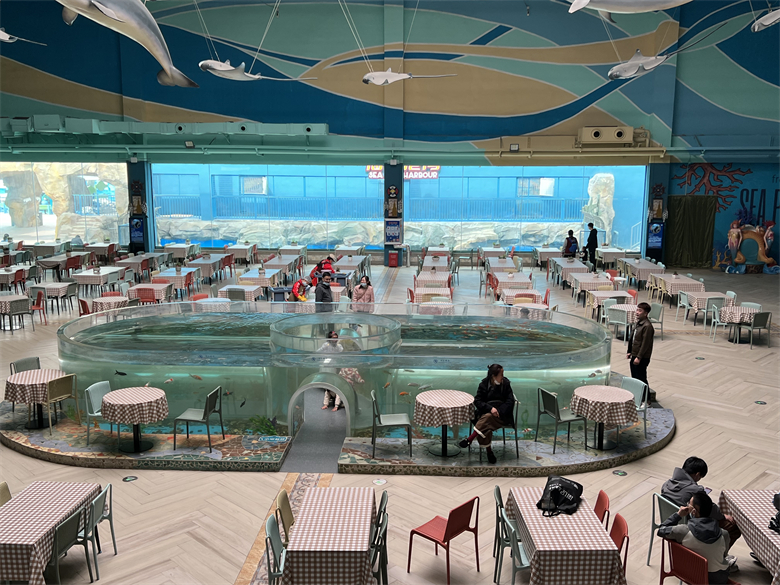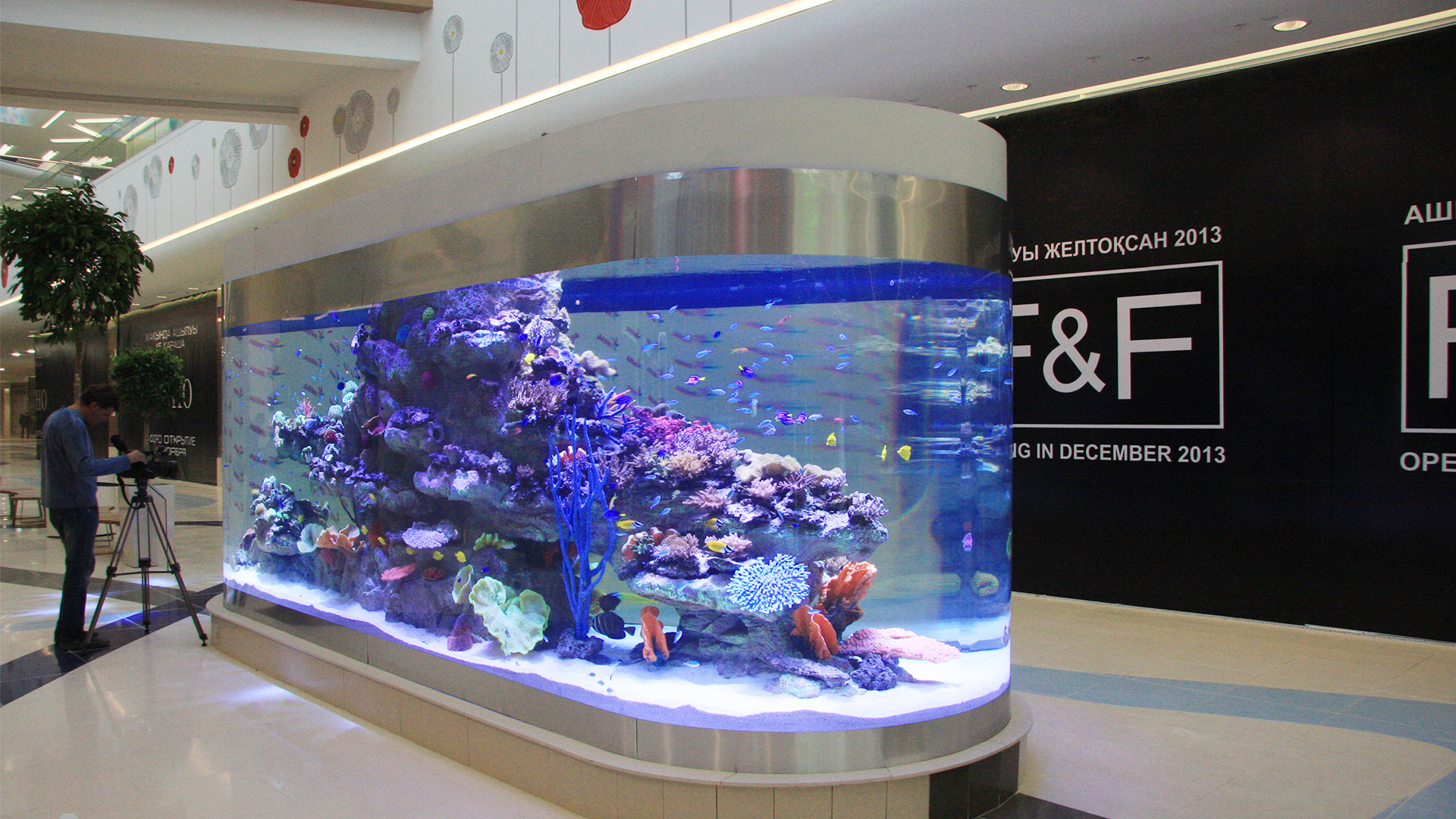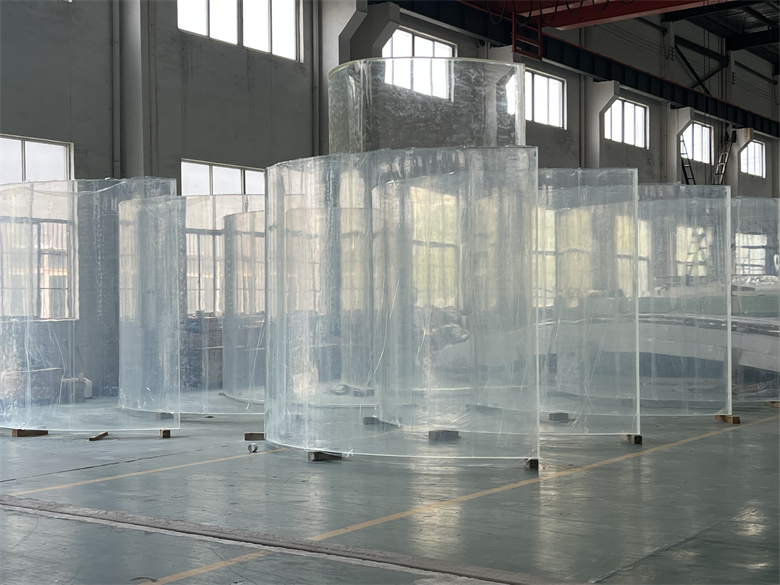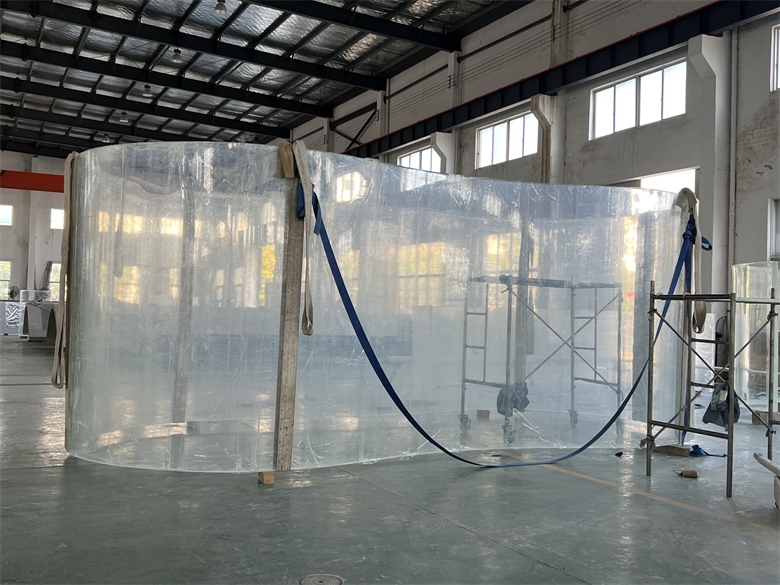How to clean acrylic aquarium
Leyu Acrylic Aquarium factory teaches you how to clean acrylic aquarium.
Cleaning an acrylic aquarium requires some care to avoid scratching or damaging the acrylic material.
Here are some steps to effectively clean acrylic aquarium:
Gather the necessary supplies:
You'll need a clean, non-abrasive cloth or sponge, a bucket or container, and an aquarium-safe cleaning solution. Avoid using harsh chemicals or abrasive materials that can scratch the acrylic.
Prepare the cleaning solution:
Fill the bucket or container with water and add an aquarium-safe cleaning solution. Follow the instructions on the cleaning solution for the appropriate ratio.
Unplug electrical equipment:
Turn off and unplug any electrical equipment, such as filters or heaters, to ensure safety during the cleaning process.
Remove decorations and accessories:
Take out any decorations, artificial plants, or accessories from the tank. Clean them separately using a soft brush or by rinsing with water.
Gently wipe the acrylic surface:
Dip the cloth or sponge into the cleaning solution and wring out any excess liquid. Wipe the inside walls of the aquarium gently using circular motions. Start from the top and work your way down.
Clean stubborn algae or deposits:
If there are stubborn algae or deposits, you can use a plastic algae scraper specifically designed for acrylic aquariums. Be gentle and avoid using sharp objects that can scratch the acrylic.
Rinse the aquarium:
Fill a clean container with fresh water and use it to rinse the aquarium thoroughly. Make sure to remove any residue from the cleaning solution.
Clean the filter and other equipment:
While the aquarium is empty, take the opportunity to clean the filter media and other equipment according to their specific instructions.
Reassemble the aquarium:
Once the aquarium and accessories are clean and dry, reassemble the tank, ensuring everything is properly positioned.
Monitor water parameters:
After cleaning, check and adjust the water parameters as necessary to maintain a healthy environment for your fish.
Regular maintenance is essential to keep your acrylic aquarium clean. Perform partial water changes, remove debris, and clean the filtration system regularly to maintain optimal water quality.
Remember to always follow the manufacturer's instructions for cleaning and maintenance of your specific acrylic aquarium model.

What is rimless acrylic aquarium?
Leyu acrylic aquarium factory professional custom rimless acrylic aquarium tank.
A rimless acrylic aquarium refers to an aquarium made of acrylic material that does not have a visible frame or rim around its edges. Unlike traditional aquariums that typically have a frame made of plastic or metal, rimless acrylic aquariums have a clean and minimalistic design with no obstructions along the perimeter of the tank.
The absence of a frame provides an unobstructed view of the aquatic life inside the tank, allowing for a more immersive and visually appealing experience. Rimless acrylic aquariums are known for their sleek and modern appearance, which can enhance the overall aesthetics of any space.
Acrylic is a popular choice for rimless aquariums due to its transparency and clarity. It offers excellent optical properties, allowing for a clear and distortion-free view of the fish and the underwater environment. Acrylic is also lighter and more durable than glass, making it less prone to cracking or breaking.
Rimless acrylic aquariums come in various sizes and shapes, catering to different preferences and space constraints. They can be rectangular, square, cylindrical, or even uniquely curved, providing versatility in design options.
Setting up a rimless acrylic aquarium requires careful consideration of its support and stability. Since there is no visible frame, a sturdy aquarium stand or cabinet is necessary to provide adequate support for the tank and its contents. Proper maintenance, including regular cleaning and monitoring of water parameters, is also essential to ensure a healthy and thriving aquatic environment.
In summary, rimless acrylic aquariums offer a contemporary and visually appealing way to showcase aquatic life. Their frameless design and clear viewing panels create an immersive and captivating display, making them a popular choice among aquarium enthusiasts.

Leyu acrylic fish tank
Leyu acrylic Aquarium factory specializing in the production of various shapes of rimless acrylic aquarium.
The Leyu rimless acrylic aquarium is a type of fish tank made from acrylic material. Acrylic is a transparent and durable plastic that is often used as an alternative to glass in aquariums. Leyu is a brand that specializes in manufacturing acrylic fish tanks and is known for producing high-quality products.
Acrylic fish tanks have several advantages over traditional glass tanks. They are lighter in weight, making them easier to move and transport. Acrylic is also more impact-resistant than glass, reducing the risk of cracking or breaking. Additionally, acrylic provides better insulation, maintaining a more stable water temperature for the fish.
Leyu acrylic fish tanks come in various shapes and sizes to suit different preferences and space requirements. They often feature seamless construction, providing a clear and unobstructed view of the fish. The acrylic material is also less prone to distortion, ensuring optimal clarity.
When setting up a Leyu acrylic fish tank, it is important to follow proper aquarium maintenance practices. This includes regularly cleaning the tank, maintaining appropriate water parameters, and providing a suitable environment for the fish. It is also crucial to choose compatible fish species and provide them with proper nutrition and care.
Overall, Leyu acrylic fish tanks offer a reliable and aesthetically pleasing option for housing and showcasing aquatic life.

Rimless acrylic aquarium how to calculate the thickness of acrylic sheet?
Leyu acrylic aquarium factory professional calculation rimless acrylic aquarium thickness
To calculate the thickness of an rimless acrylic aquarium, you need to consider the water pressure exerted on the walls of the tank. The thickness required depends on factors such as the dimensions of the tank and the depth of the water.
Here's a general guideline for calculating the thickness:
Determine the maximum water level: Decide on the desired water level in the aquarium. This will help determine the height or depth of the water column.
Calculate the hydrostatic pressure: Hydrostatic pressure increases with the depth of the water. The formula to calculate hydrostatic pressure is P = ρgh, where P is the pressure, ρ is the density of water (approximately 1000 kg/m³), g is the acceleration due to gravity (approximately 9.8 m/s⊃2;), and h is the height or depth of the water column.
Determine the maximum pressure on the walls: The maximum pressure exerted on the walls of the aquarium occurs at the bottom. This pressure is equal to the hydrostatic pressure calculated in the previous step.
Choose an appropriate safety factor: It's important to add a safety factor to the thickness calculation to account for any uncertainties or variations. A common safety factor is 3 or 4.
Calculate the required thickness: Divide the maximum pressure on the walls by the safety factor. The resulting value will be the minimum thickness required for the acrylic material.
It's worth noting that this is a simplified method and does not take into account additional factors such as the dimensions and design of the aquarium, the material quality, or any additional loads or stresses. For large or custom aquariums, it's recommended to consult with an expert or engineer who specializes in aquarium design to ensure the appropriate thickness is determined.

English
العربية
Русский
Español
Português
Français
Deutsch
italiano
한국어
Nederlands
Tiếng Việt
ไทย
Polski
Türkçe
አማርኛ
ភាសាខ្មែរ
Bahasa Melayu
தமிழ்
Filipino
Bahasa Indonesia
magyar
Română
Čeština
Српски
हिन्दी
فارسی
Kiswahili
Slovenčina
Slovenščina
Norsk
Svenska
Ελληνικά
Suomi
עברית
Dansk
Shqip
বাংলা
Hrvatski
Afrikaans
Māori
සිංහල
Беларуская мова
Bosanski
ދިވެހި
Esperanto
guarani
Hausa
ʻŌlelo Hawaiʻi
Kurdî
Lietuvių
Македонски
ਪੰਜਾਬੀ
Runasimi
Türkmençe
isiZulu


 +86-13584439533
+86-13584439533 













































